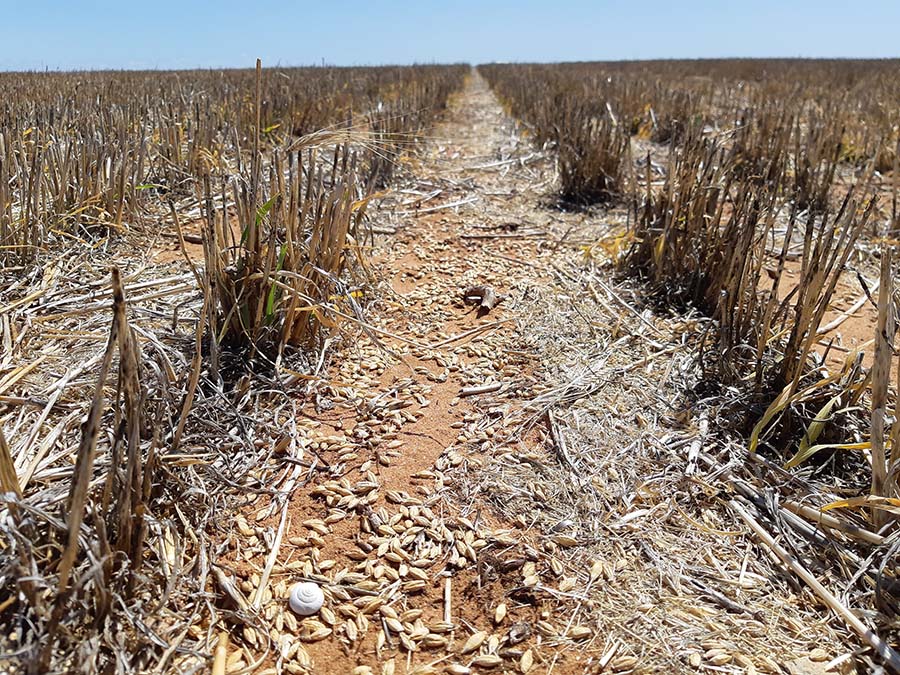Grain growers in areas where mouse numbers are at moderate levels are advised to prioritise minimising grain on the ground after harvest to help reduce the potential for an outbreak ahead of sowing in 2021.
Pest experts who are supported by GRDC are encouraging growers to harvest as cleanly as possible and practice good farm hygiene, especially around grain storage facilities, to reduce the availability of food for mice.

A mouse’s view of a stubble paddock with abundant food (spilt grain after harvest). Photo: CSIRO
Lead mouse researcher Steve Henry from CSIRO, Australia’s national science agency, says food resources left in paddocks after harvest could sustain mouse breeding and lead to higher mouse numbers when next year’s winter crops are sown.
“Yields are likely to be high for many growers across the southern cropping region this year which means the likelihood of grain being left on the ground is also high,” says Mr Henry, whose mouse-related research is through a GRDC investment.
“Getting as much grain as possible into the silos will help to reduce the potential for any build-up in mouse populations. Reducing residual food in paddocks will enhance the effectiveness of mouse baiting activities prior to sowing in 2021.”
The latest monitoring undertaken by CSIRO through a GRDC research investment indicates that mouse numbers are moderate in isolated patches across South Australia (northern Adelaide Plains and western Eyre Peninsula especially, as well as southern Yorke Peninsula) and Victoria (Wimmera and southern Mallee).
Mr Henry says breeding commenced in early spring, and recent and forecast wet conditions, combined with a buoyant harvest, could promote current moderate populations to swell to relatively high densities by autumn 2021, coinciding with sowing of winter crops.
“Growers should remain vigilant and act accordingly if mouse abundance is of concern,” he says.
“Because of patchy activity between paddocks, growers are advised to monitor across multiple paddocks to gauge mouse numbers to inform management decisions. Mouse chew cards are useful at this time of year.”
It may not be possible for growers to bait in crops because of restrictions with label conditions (be aware of the 14-day withholding period before harvest). More details about control options are available via GRDC's Mouse Control website.
Mr Henry also urges growers to report and map mouse activity – presence and absence – using MouseAlert and via Twitter using @MouseAlert so other growers can see what activity is being observed in their neighbourhood.
Meanwhile, GRDC has invested in a major mouse-related research, development and extension program that is continuing to reveal new insights about mice in Australian broadacre cropping systems. The work is investigating mouse biology, ecology and bait efficacy.
Results from current research efforts will form the basis of a series of recommendations for improved mouse control strategies for Australian grain growers.
More information: Steve Henry, CSIRO, 0428 633 844.

























































